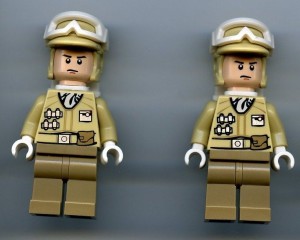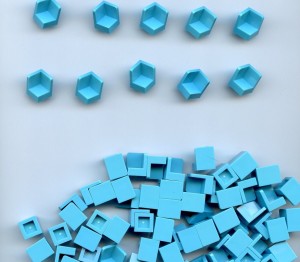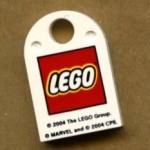
A scanner produces a highly detailed and professional image of these Star Wars Hoth Rebel Trooper LEGO minifigs.
If you’re selling LEGO pieces on eBay then chances are you’ll need to add your own photos to the eBay listing. Since most LEGO pieces are small, detailed, or both small and detailed, you might consider using a scanner to capture the nuances of the LEGO pieces you’re selling. Here’s a look at some of the pros and cons of scanning your LEGO pieces.
Pros of Using a Scanner
Scanners Produce Clean, High Quality, Professional Images
Scanners produce higher quality photos than many cheap point and shoot cameras or camera phones. Your buyers will be able to see everything from patterns and print details to the LEGO logo on a plate stud to prove that the pieces are genuine LEGO.
Tip: Some cheap scanners DO NOT provide high quality scans. I bought an inexpensive 3-in-1 printer, scanner copier. Although the scanner works fine for documents, scans of three dimension objects like LEGO pieces turn out blurry.
Scans are loaded directly onto your computer
Since scans are loaded onto your computer you don’t need to mess with loading the images from a memory card, like you may have to do with some cameras.
Ability to scan several items at once
You can easily scan several items at once–whatever fits on the scanning bed–then go back and crop the individual items later.
Cons of Using a Scanner
Limited Space on the Scanning Bed
A big constraint of using a scanner is that the pieces you’re scanning need to fit into the scanner (duh!). If all the pieces don’t fit in one scan, then you could divide the lot into two or three scans. But if the item is larger than the scanner, then you’ll need to photograph the item instead.

These LEGO police helmets are not easily scanned. The helmets tip to side on the scanner bed and do not show the “Police” lettering, an important feature of the piece.
Some LEGO pieces are difficult to scan
Some LEGO pieces don’t balance on the scanner glass. The police helmets on the right would not show the “Police” lettering if they were scanned instead of photographed.

The top panel pieces show the dimensionality of the piece. Some of the bottom panel pieces only show one side, making the panel look like a tile. Watch out for deceptive “flatness” while scanning LEGO pieces.
“Flat” Images
Scanned LEGO pieces can sometimes look flat look compared to photographs. If you scan one side of a LEGO panel, for example, the piece might look more like a tile, which does not provide an accurate representation of the piece for your buyers.
Scanning May Take Longer than taking a photograph
Depending on your scanner settings and the resolution of the scan, taking a scan of a LEGO item may take longer than taking a photo. Scan multiple items at once to save time and crop individual items later.
Scanning Certain Colors May be Difficult
Scanning white or clear LEGO pieces can be a challenge due to the white backdrop on the scanner. Putting a piece of tan cardboard or colored paper behind the white or clear item may fix the problem by providing a contrasting color to the item.
LEGO Pieces May Scratch the Scanner Glass
If you’re planning on using the scanner for other things like photos, be careful because scanning LEGO pieces might scratch the glass over time.

